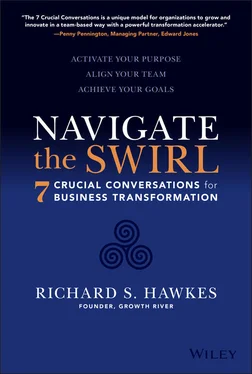When people talk about complex adaptive social systems in complexity theory, they often refer to ants. Ants are a favorite of scientists, in part because of their unique organizing capabilities. They get so much done! They constantly toil, build, and expand their colonies. They exhibit self-organization, division of labor, and can adapt to changing circumstances. And they do it all with only a few types of ants fulfilling a few roles and with brains the size of a microliter (albeit quite large relative to their size). Like ants, humans have the ability to organize, solve problems as a group, and exhibit remarkable feats of collective intelligence. But we do it on a completely different scale of complexity. But it's not only the brain size that makes a difference; it's the balance between our individual agency and our social natures. Humans can collectively organize in large groups, while retaining a high degree of individual capacity for creativity and agency. Indeed, with all due respect to the remarkable feats of our insect friends, human potential for dynamic, creative, collective intelligence is off the charts.
You might think that's obvious, but there are many organizational approaches that assume people are not that different to ants—that we are merely Pavlovian creatures of instinct and incentive. Of course, humans certainly do respond to incentives, and are partially driven by instinct, but that is not all that is going on. And if we want to reach the full potential of organizational life, it's important to recognize that truth. A business is a complex adaptive social system because it is more than the sum of its parts, but also because its parts are people—unruly, innovative, unpredictable, irrational, responsible, empathetic, intentional, creative, surprising people.
In fact, one of the things I love about business is that it represents the cutting edge of our capacity as human beings to join together, engage our best efforts, and improve our lives both individually and collectively. Business, as a shared endeavor, is a kind of evolutionary forefront in our cultural capacity to organize. Of course, humans are tribal creatures and we have always naturally come together and cooperated in small bands, and over the last several thousand years gathered together in larger cities. But larger organizational efforts have been more limited. Indeed, there was a time when the most dramatic and impressive examples of humans banding together in large collectives only happened in rare circumstances, usually through intensive government effort, religious solidarity, or out of military necessity. But over the past few hundred years, something remarkable has happened. Humans have begun to band together in an historically unprecedented way—to accomplish things through the domain of business. These extended tribes have arisen to accomplish all kinds of things together—to create and innovate, to build and scale, to produce and sell. Today's organizational entities go beyond business of course—there are many other examples of large and impressive organizations today, like nonprofits or educational institutions. But even so, business has truly been at the leading edge, and sometimes bleeding edge, of learning how to make human organization adaptive and dynamic even as it grows larger and more complex. Indeed, understanding how to make large organizations work in a dynamic way is still a relatively new science, and there is so much to learn. But make no mistake, our ability to solve tomorrow's great challenges will, in no small way, depend on our ability to effectively organize and accomplish things together at scale, in complex adaptive social systems.
In my experience, many business leaders don't think about any of this when they start a company, or even take over an established one. They focus their attention on creating or refining their value proposition, developing their product or services, finding customers, marketing, sales, and so forth. Then one day, they wake up and realize that they are in charge of much more than profit and loss statements. It dawns on them that they are holding the reins of a strange, unpredictable beast that has its own ideas, its own seeming agency, and can be quite resistant to outside input and to demands for change. Occasionally, the necessary leadership skills come naturally, and an entrepreneur or executive manages to navigate this task with instinct and intuition. But even the best instincts in the world only get you so far when it comes to something as complex as human systems.
I remember one painful situation in which thinking of teams and companies as mechanical systems, rather than social systems, led to a near disaster for a company, and a professional setback for me personally. The context was a recent merger of three large consumer products companies. The opportunity, as envisioned by the board of directors who had engineered the merger, was to increase the market potential of the enterprise and to reduce its overall costs by combining and streamlining the sales capabilities across the three companies.
After the transaction had been completed, they moved quickly to change the organizational structure, so that all the sales capabilities from across the three companies now reported to a single functional leader. I remember they gave that person the title of “Global Head of Sales” and he was appointed as the new enterprise leader. The board then directed the three former CEOs, who still had their CEO titles, and the new Global Head of Sales, to work as a team and align on a path forward for the company. As you might imagine, it easily turned into a battle zone, as the three CEOs competed for access to sales resources.
The board had been approaching the issue in mechanical terms, not social system ones. Thinking they could plug and play various leaders from a distance, they'd given little thought to what would make the social system of the combined businesses thrive. And in my role as consultant, I was tasked with aligning this team. Unfortunately, I had not yet embraced a deeper view of organizational life, nor fully understood the nature of the system I was working with. I wasn't yet approaching these issues from a social systems perspective. So I tried to simply convince the competing CEOs that I had a great plan. They resisted. I failed to recognize the social dynamics that were setting them on a path of conflict, and even more importantly, I failed to work with them to build relationships, understand their needs, and co-develop an organic path forward that could actually achieve alignment from the inside out. I was offering a monologue when a deeper dialogue was needed. But in those days, I didn't yet appreciate the transformative power of authentic conversations to influence social systems. As a result, I lost influence, and failed in my mission.
I've seen many business leaders reach the point when they begin to realize that leading an organizational social system is much more complex and difficult than they had bargained for. At that point, they sometimes start wishing that they could simply replace their team. Hire a new group of super-talented, easy-to-manage, uncomplicated team members who already work perfectly well together, and all the problems will simply vanish! But of course, that's not possible. Sometimes bringing in new blood is helpful, but the idea that the problems are rooted in having the wrong people as opposed to inadequate leadership and a dysfunctional organizational regime is the unfortunate root of many problems in today's workplace. I promise you, there is no perfect team out there on LinkedIn waiting to answer your email. Sooner or later, every successful leader has to grapple with a terrible but liberating truth—they can't solve their problems through hiring and firing. They have to find ways to develop their own leadership intelligence, which will then allow them to develop their team and ultimately influence their company. Thus begins the journey, and the real work of organizational transformation.
Читать дальше












